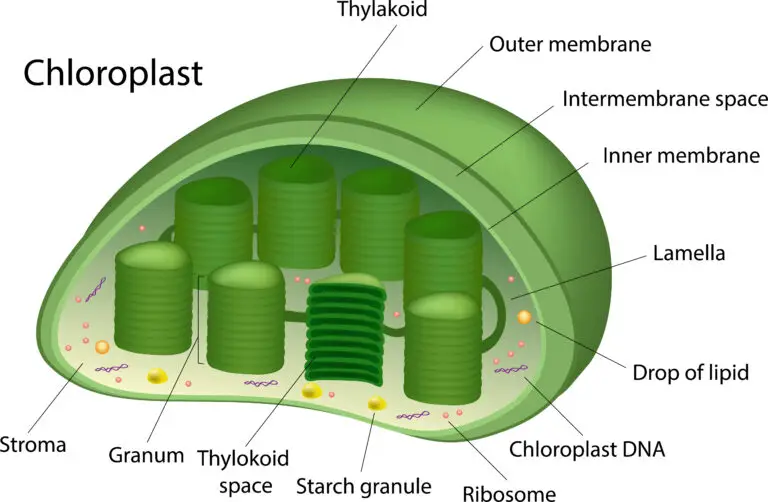Thylakoid

Table of Contents
What is a Thylakoid?
A thylakoid is a membrane-bound compartment within the chloroplasts of plant cells and some types of algae, where photosynthesis takes place. Thylakoids are the structural units responsible for capturing and converting light energy into chemical energy, which is then used to produce organic compounds during the light-dependent reactions of photosynthesis.
Overview of Thylakoids
Membrane Structure
Thylakoids are flattened, membranous sacs that are arranged in stacks called grana (singular: granum). The grana are interconnected by thin membranes known as stroma lamellae.
Chlorophyll and Pigments
Thylakoid membranes contain pigments, including chlorophyll a and b, as well as carotenoids. These pigments are essential for capturing light energy during the process of photosynthesis.
Photosynthetic Electron Transport Chain
Protein complexes are involved in the photosynthetic electron transport chain within the thylakoid membranes. These complexes, including photosystem I and II, transfer electrons and generate a proton gradient across the thylakoid membrane.
ATP Synthesis
The proton gradient created across the thylakoid membrane during the light-dependent reactions is used to drive ATP synthesis. ATP (adenosine triphosphate) is a molecule that stores and releases energy for cellular processes.
Light-Dependent Reactions
Thylakoids play a central role in the light-dependent reactions of photosynthesis, where light energy is absorbed by chlorophyll and converted into chemical energy stored in ATP and NADPH.
Photosynthesis in Thylakoids
- Light Absorption: Chlorophyll and other pigments in the thylakoid membranes absorb light energy during the light-dependent reactions.
- Electron Transport: Light energy is used to excite electrons in chlorophyll molecules. These energized electrons move through the photosynthetic electron transport chain embedded in the thylakoid membrane.
- Proton Pumping: As electrons move through the electron transport chain, protons (H⁺ ions) are pumped across the thylakoid membrane into the thylakoid space.
- ATP Synthesis: The movement of protons back across the thylakoid membrane through ATP synthase generates ATP, utilizing the energy stored in the proton gradient.
- NADPH Formation: Electrons are ultimately transferred to NADP⁺ (nicotinamide adenine dinucleotide phosphate), leading to the formation of NADPH.
Related Links
Chloroplast
Nucleotide
Rhizome
Xerophyte